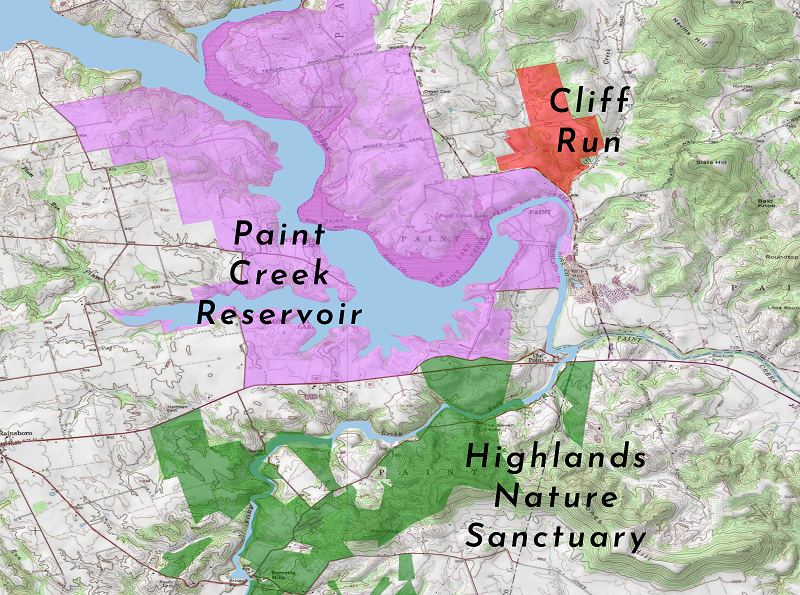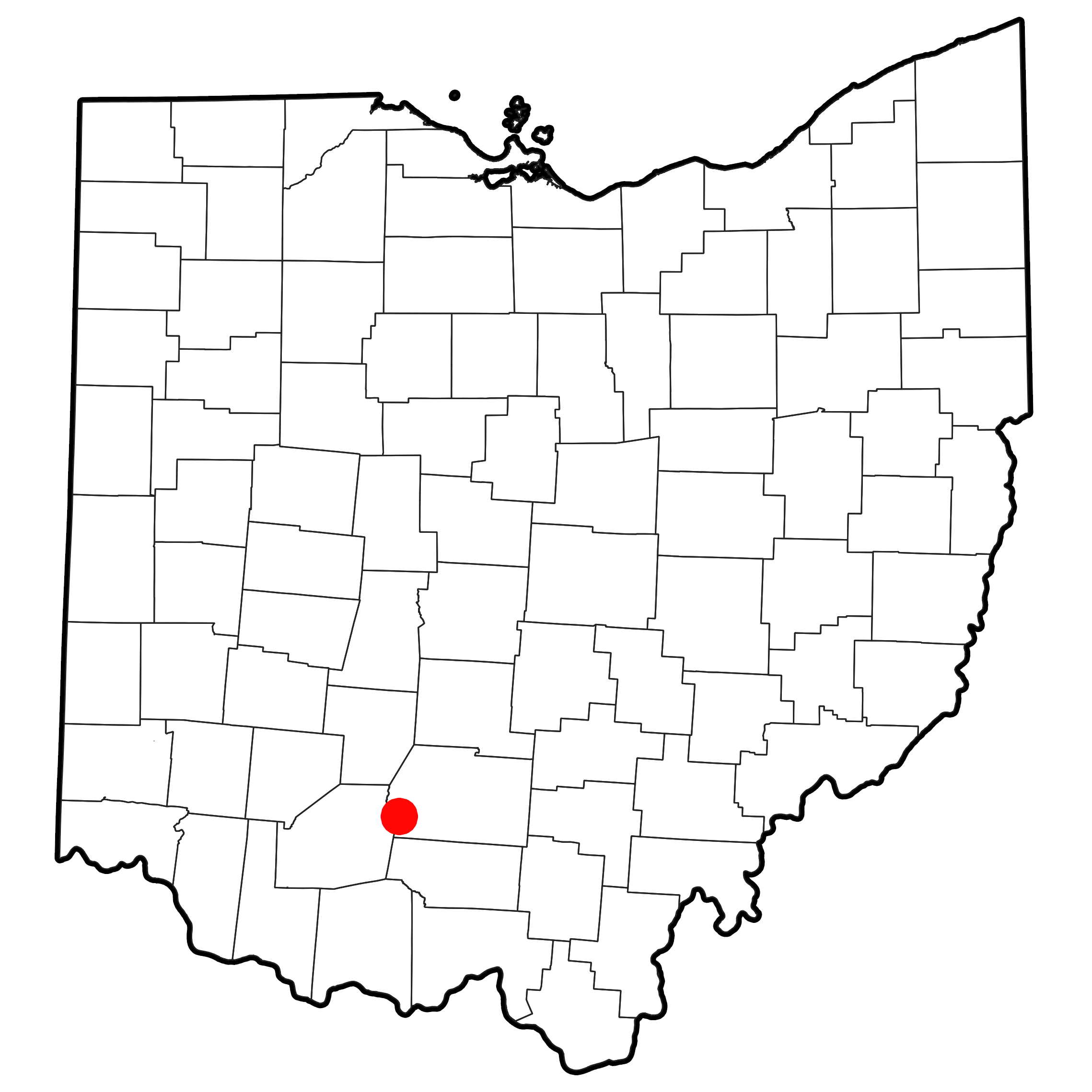Cliff Run Cascades. Photo by Lewis Ulman.
Cliff Run Preserve
a new 300-acre preserve in Ross County
Acquisition Cost of $1,242,510 IS COMPLETE!!
Stewardship Campaign: $600,000
Adding $600,000 to the Arc’s Endowment Fund will fund the perpetual stewardship of Cliff Run… forever.
Hiking: Sunrise to Sunset
Address: 255 Cliff Run Road,
Bainbridge, OH 45612. 39.25667, -83.3435
A note on ticks & chiggers
Download and Go! - PDF Hiking Guide
A dog owner's guide to hiking the Arc of Appalachia
Cliff Run Preserve - one of the Arc’s newest - has been almost a decade in the making and is now open . It lies just a few miles north of the Highlands Nature Sanctuary on the eastern boundary of 5,650-acre Paint Creek State Park. The preserve protects two outstanding waterways in a classic karst landscape: Cliff Run and its smaller tributary, Lewis Gorge. Both streams boast impressively deep, vertical-sided gorges with stunning rock features.
Scroll beneath the photo gallery for details on the preserve’s natural history.












Why Endowing Land Stewardship Is So Important for the Future
Each Arc Preserve requires enduring stewardship. To buy a preserve and not maintain it with the proper equipment, attention, and “boots on the ground” would be deeply irresponsible because an ignored preserve is a preserve only in name. No one’s land is everyone’s land.
The best and truly only insurance for successfully caring for Arc preserves is to build strong balances in our Stewardship Endowment Funds so that, over time, the fund’s annual income will substantially contribute to the yearly costs of sustainable stewardship. On the average, for every $1.00 invested in land acquisition, another $1.00 is needed in the endowment fund. For our larger preserves, the cost is much higher. We have a realistic chance of achieving sustainability if many of our Arc supporters choose to remember us in their wills and trusts. We also encourage donors to tick off the “restricted donation” option that will direct 50% of the gift to land acquisition and 50% to our primary “Stewardship Forever Endowment Fund.” Or, include a note with your check. See the following articles for deeper information:
A Premier Karst Landscape. Karst is an uncommon landscape type in Ohio because most of the state’s limestone and dolomite bedrocks are deeply buried under glacial till. Karst refers to landscapes anywhere on the planet where alkaline bedrocks - usually limestone or dolomite - lie close to the earth’s surface. Situated above an ancient formation of “Peebles Dolomite,” Cliff Run Preserve is a genuine karst landscape, boasting such classic features as bluffs, sinkholes, seeps, springs, grottos, and a mile of vertical-walled dolomite canyon. The karst bluffs and waterways found at Cliff Run represent intact and healthy native ecosystems, as evidenced by the presence of abundant spring wildflower displays, exceptional water quality, and high tree species diversity.
Cliff Run Preserve’s Outstanding Spring Wildflowers. Like most karst landscapes, Cliff Run Preserve has exceptionally showy wildflower displays in the Spring. Drifts of flowers cling to 50-foot vertical cliffs that border the limestone-bottomed creek and festoon the narrow riparian corridors bordering the gorges’ waterways. This preserve is a karst country floral showcase at its best! Wildflowers are one of the best indicators of an intact forest ecosystem. When a forest is negatively impacted by human activity, its most telling indicators are a diminishment in: a) soil health, b) water quality, and c) understory biodiversity. All three indicators of a healthy forest receive high marks at Cliff Run Preserve. In fact, the preserve boasts one of the densest spring wildflower displays in a region already renowned for its wildflower displays, a region that includes the nearby Highlands Nature Sanctuary and Paint Creek Reservoir (see map above). Many of the signature plants found at Cliff Run Preserve are especially adapted to high-alkaline habitats, including hepatica, columbine, smooth cliff brake, miterwort, Sullivantia, and walking fern.
Cold Water Streams: The protected watershed of Cliff Run includes a stretch of Cliff Run proper, as well as its beautiful tributary known as Lewis Family Gorge. The striking beauty of the gorge’s vertical dolomite cliffs and the pavement-like level rock bottom were what inspired our pursuit of this land’s acquisition. Both the gorge and the beautiful ravine carved by Cliff Run support rich macroinvertebrates and cold-water-adapted fauna, including the mottled sculpin.


